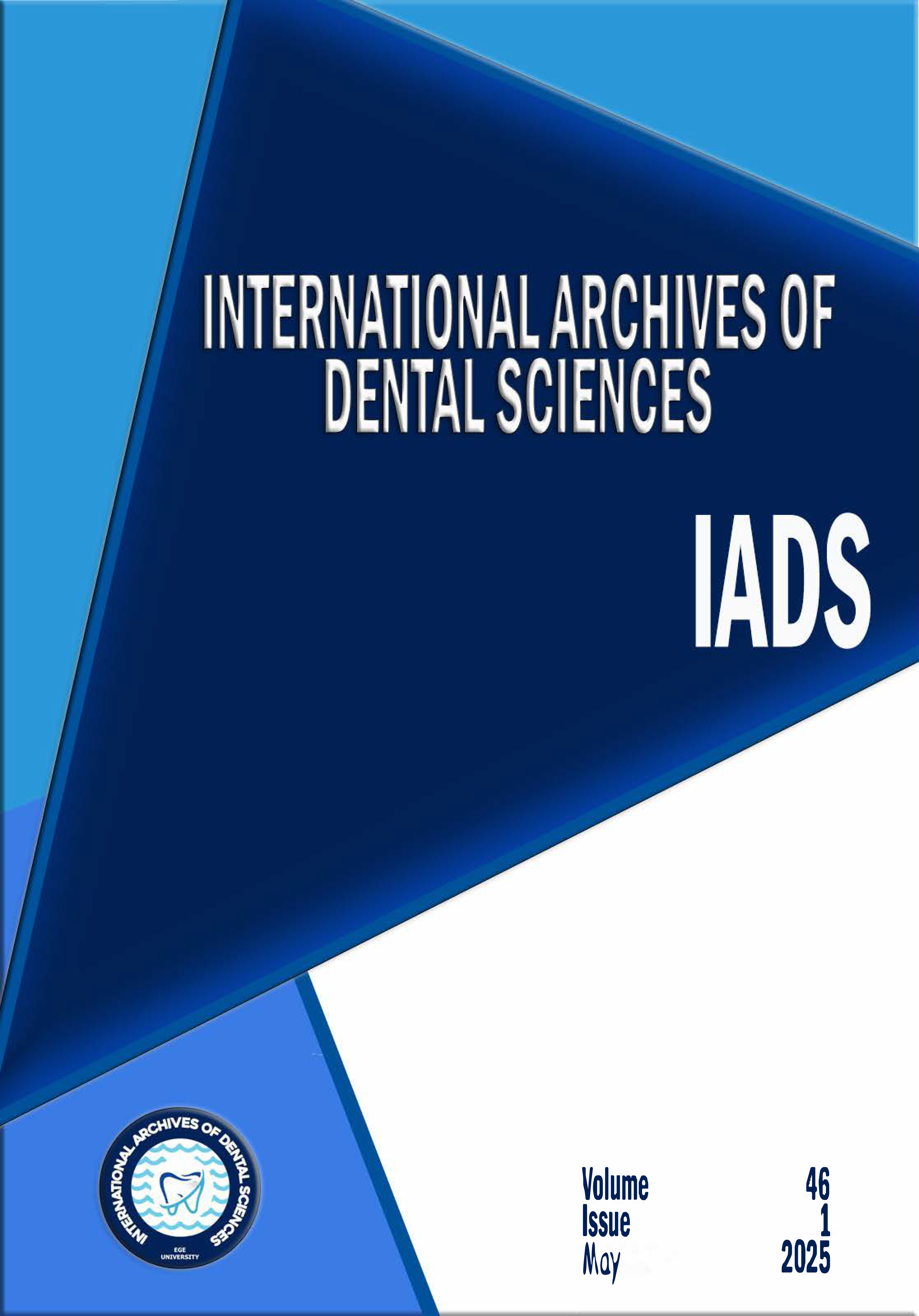
Bu eser Creative Commons Alıntı-GayriTicari-Türetilemez 4.0 Uluslararası Lisansı ile lisanslanmıştır.


Evaluation of the effect of different digital impression systems on the impression accuracy of dental implant
Nazmiye ŞenIstanbul University Faculty Of Dentistry, Department Of Prosthodontics, IstanbulINTRODUCTION: The purpose of this in-vitro study is to evaluate the effect of different digital impression systems on the impression accuracy of dental implant.
METHODS: In a standard full-arch maxillary model, the tooth 26 was removed and an implant analogue was placed. The scanning process was first performed with a reference scanner. Taking measurements with intra-oral scanners repeated 10 times for each group using 3 different digital scanners [Trios 3, iTero Element 2 and Medit i500]. Obtained images were output in STL format and compared using 3D inspection software. The mean deviation amounts were determined by overlapping the STL data obtained to determine the trueness and precision of the impressions. The data were statistically compared using Kruskal-Wallis test and Mann-Whitney U tests. Statistical significance was determined at p<0.05.
RESULTS: Significant differences were found among the trueness values of the groups obtained by different digital impression systems (p<0,05). The highest trueness was obtained in the Trios 3 (32.81 ±11.65μm) group followed by the groups iTero Element 2 (49.12 ±8.97μm) and Medit i500 (46.25 ±17.08μm). No significant difference was found among the different digital impression groups for the precision values (p>0,05).
DISCUSSION AND CONCLUSION: The impression accuracy of dental implants is affected by the different digital impression systems.
Farklı dijital ölçü sistemlerinin dental implantın ölçü netliğine etkisinin değerlendirilmesi
Nazmiye Şenstanbul Üniversitesi Diş Hekimliği Fakültesi, Protetik Diş Tedavisi Ana Bilim Dalı, İstanbul, TürkiyeGİRİŞ ve AMAÇ: Bu in vitro çalışmanın amacı; farklı dijital ölçü sistemlerinin dental implantın ölçü netliğine etkisinin değerlendirilmesidir.
YÖNTEM ve GEREÇLER: Standart olarak üretilen tam dişli üst çene modelinde, 26 nolu diş modelden çıkartılarak yerine bir implant analoğu yerleştirildi. Tarama işlemi ilk olarak referans tarayıcı ile gerçekleştirildi. Ağız içi tarayıcılar ile ölçü alınması işlemi; 3 farklı dijital tarayıcı [Trios 3, iTero Element 2 ve Medit i500] kullanılarak her bir grup için 10 kez tekrarlandı. Elde edilen görüntülerin STL (standard tessellation language) formatında çıktısı alındı ve 3 boyutlu inceleme yazılımı kullanılarak karşılaştırıldı. Ölçülerin gerçekliğini ve doğruluğunu belirlemek için elde edilen STL veri setleri çakıştırılarak ortalama sapma miktarları belirlendi. Elde edilen veriler Kruskal-Wallis testi ve Mann-Whitney U testleri ile istatistiksel olarak değerlendirildi. İstatistiksel anlamlılık düzeyi p<.05 olarak belirlendi.
BULGULAR: Farklı dijital ölçü sistemleriyle elde edilen ölçülere ait gerçeklik değerleri arasında anlamlı farklar saptandı (p<0,05). En yüksek gerçeklik bulguları Trios 3 (32.81 ±11.65μm) grubunda elde edildi ve onu sırasıyla iTero Element 2 (49.12 ±8.97μm) ve Medit i500 (46.25 ±17.08μm) grupları izledi. Farklı dijital ölçü sistemlerine ait doğruluk verileri arasında ise anlamlı farklılık saptanmadı (p>0,05).
TARTIŞMA ve SONUÇ: Farklı dijital ölçü sistemleri, dental implantın ölçü netliğini etkilemektedir.
Manuscript Language: Turkish


